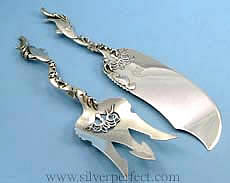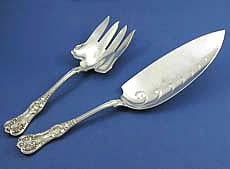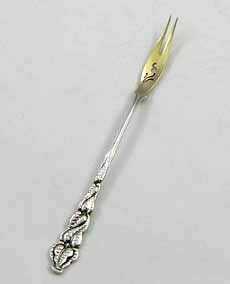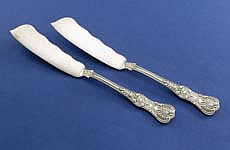The Fish Serving Sets are made up of two pieces, the Fish Serving Fork,used to carefully separate large pieces of fish as they are served, and the Fish Server, used to lift and serve fish onto the guest's plate.
These sets are prized and very expensive. They tend to be very ornate with the fork being short and wide and the server being flat with one side open to facilitate carefully serving delicate fish in one piece after it has been filleted at the table.
(Shown in unknown pattern by Shiebler)

(Shown in English King by Tiffany)


















